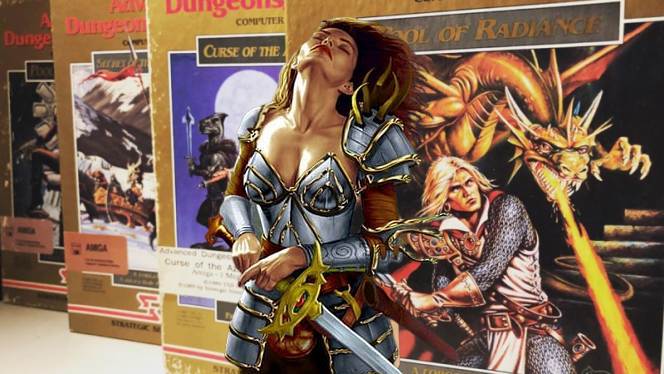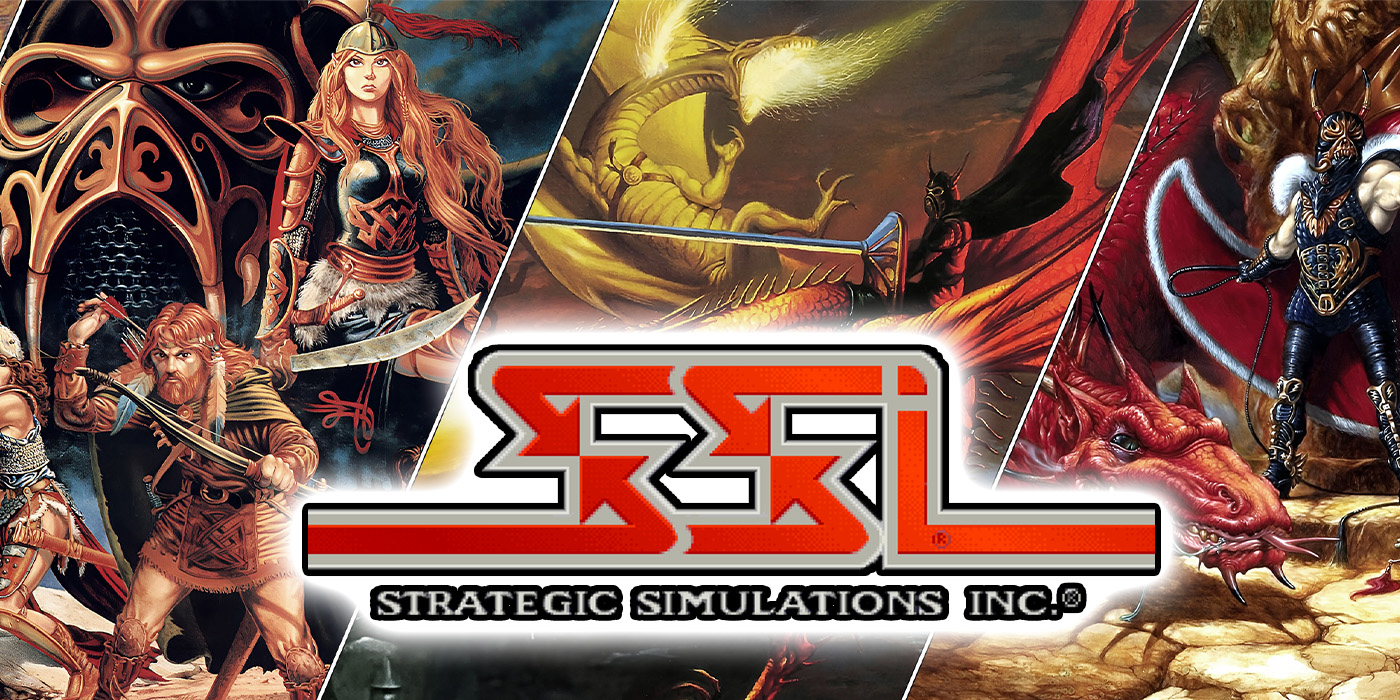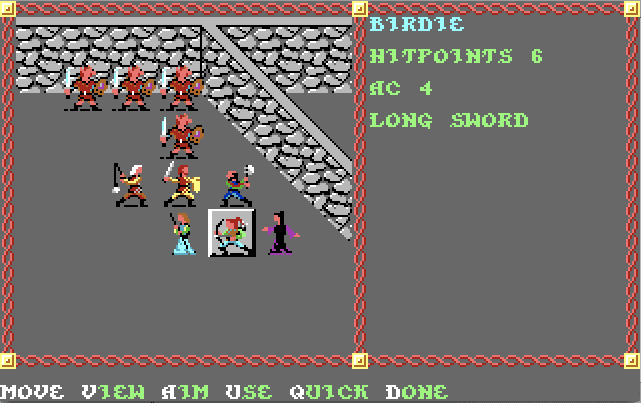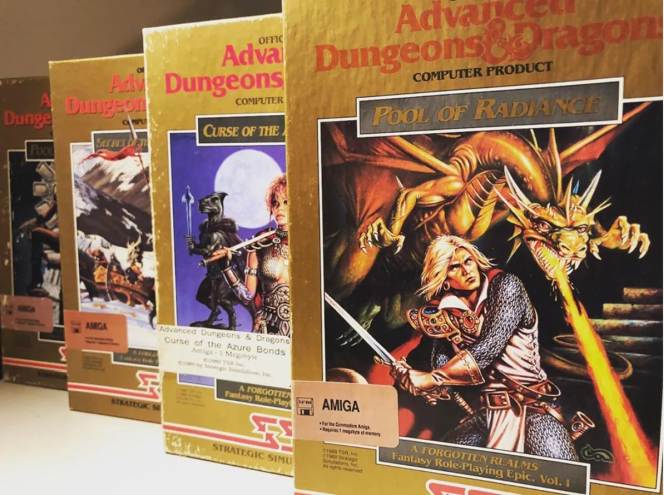RETRO – The name Dungeons & Dragons, or D&D, represents more than just a game; it stands for an entire universe and a cultural phenomenon. The world’s oldest and most popular tabletop RPG has left an indelible mark in the digital realm. Bespectacled geeky teenagers and seasoned hardcore gamers alike were glued to their screens, as Strategic Simulations, Inc. (SSI) brought the digital magic of D&D to life in the 1980s and 1990s – a moment also depicted in the Netflix series, Stranger Things. Ready for a nostalgic trip down memory lane?
As the pen-and-paper role-playing game Dungeons & Dragons found its place in the digital world by the late 1980s, gamers of that era experienced something revolutionary. The dawn of digital role-playing games gave us renowned titles that not only adapted the D&D rules into a computer setting but elevated them. SSI was a pioneer during this time, leading adventures from PC monitors to Commodore displays, encapsulating all that the fantasy world has to offer.
SSI: The Initial Strides
Founded in 1979 by Joel Billings, an avid fan of war strategy games and D&D, SSI initially produced mainly war games. However, in 1987 they acquired the D&D license from TSR, the then rights holder of the game. This led to the release of the famed “Gold Box” series, named after the golden boxes in which the games were sold. The inaugural game in this series was Pool of Radiance, released in 1988 for the PC, Commodore 64, Amiga, and other platforms. Set in the Forgotten Realms universe, players could control a party of four. Using the first edition D&D rules adapted to SSI’s own engine, gameplay was divided between an isometric city map for interactions and an overworld combat map for tactical battles against foes.
Following its success, sequels ensued: Curse of the Azure Bonds (1989), Secret of the Silver Blades (1990), and Pools of Darkness (1991). Often referred to as the “Pool of Radiance Quartet”, players could carry the same team across each game. Other Gold Box titles appeared, set in the Dragonlance universe such as Champions of Krynn (1990), Death Knights of Krynn (1991), and The Dark Queen of Krynn (1992), and set in the Buck Rogers universe like Countdown to Doomsday (1990) and Matrix Cubed (1992). Common characteristics of the Gold Box games included intricate character creation, diverse quests, challenging combats, and rich storytelling. However, over the years, there was little advancement in graphics and sound. The Gold Box engine began showing its age against newer technologies, prompting SSI to transition to a new engine.
Console Experiences: Commodore 64 and Commodore Amiga
SSI didn’t just dominate the PC space; they also ventured onto the Commodore 64 and Amiga platforms. Despite simplified controls and graphics, these console adaptations maintained high quality, further solidifying SSI’s reputation. Their new engine debuted with Eye of the Beholder in 1991, developed by Westwood Studios for the PC and Amiga.
Another title set in the Forgotten Realms, players navigated a vast labyrinth with a four-member party, emphasizing exploration and puzzles more than its Gold Box predecessors. With superior graphics, sound, and smoother gameplay, Eye of the Beholder was followed by Eye of the Beholder II: The Legend of Darkmoon (1991) and Eye of the Beholder III: Assault on Myth Drannor (1993). These sequels refined the original’s strengths, introducing new locales, foes, and challenges, earning adoration among D&D enthusiasts as some of the best RPGs.
The “Dark Sun” destroy everything…
Another new engine by SSI was showcased in Dark Sun, released in 1993 for the PC. Set in a post-apocalyptic fantasy world, the sun’s scorching heat has drained the land, with survivors battling for resources. Although it used the second edition D&D rules, it introduced innovative features like psychic abilities, gladiators, and half-animal creatures. The gameplay was more interactive and varied compared to the Gold Box titles. Its sequel, Dark Sun: Wake of the Ravager (1994), continued the story, presenting new missions, characters, and settings. Despite its success, a multitude of bugs, particularly in Wake of the Ravager, made the gameplay experience bitter for some, with claims that it was even unbeatable.
SSI’s last D&D title, Menzoberranzan, was released in 1994 for the PC. Utilizing the Eye of the Beholder engine, it was set in the city of the dark elves in the Forgotten Realms. While not a flop, it failed to bring anything novel to the table and couldn’t match the success of its predecessors.
Farewell to the D&D License!
At this point, SSI found itself in a precarious position, having lost the D&D license and unable to compete with newer role-playing game developers like BioWare and Blizzard. Consequently, SSI began to venture into other genres, including strategy and action games, but these failed to yield the desired results. Ultimately, in 1994, SSI was acquired by Mindscape, another video game publishing company, which itself underwent several transformations. Mindscape fell into the hands of The Learning Company in 1996, and then to Ubisoft in 1998. With this, the SSI brand ceased to exist. The last game bearing the SSI logo was “Panzer General 3D Assault,” released in 1999.
However, the D&D games by SSI have not been forgotten. Many still play or remember them with nostalgia today. SSI’s games defined the golden age of computer role-playing games and influenced later D&D games such as “Baldur’s Gate,” “Neverwinter Nights,” and “Planescape: Torment.” The games of SSI are true classics that showcased the richness and thrilling experiences the world and rule system of D&D can offer to video game players. Though the American company did not stay on top over the years, the adventures created by the company will live forever in the hearts of gamers.
-BadSector-




















Leave a Reply